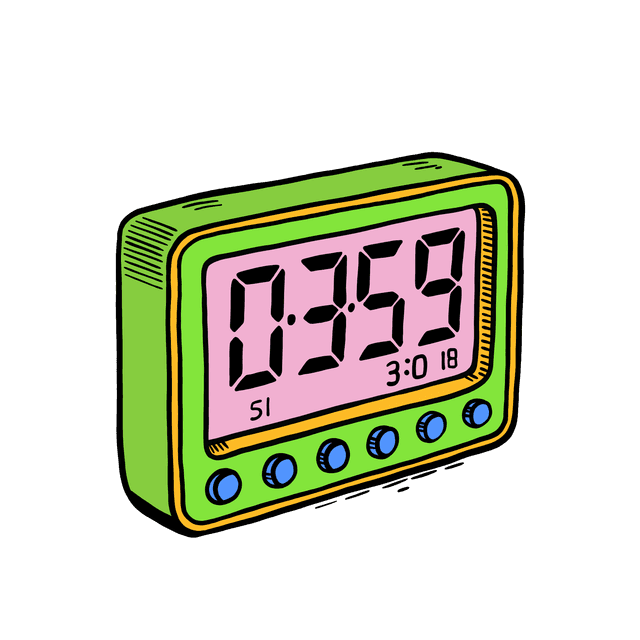Sections
Latest

Let’s learn how to ask for and tell the time in German.
There are a few key expressions and words to memorize, but once you’ve learned them, you'll be ready to schedule meetings and make appointments with ease!
First, here are some important time-related words:
You might use them like this:
Okay, great 🎉. Let's continue.
Now, let's learn how to ask for the time, using the words we have just learned.
The German word Uhr does not only refer to a clock (object), but also to o'clock. With this in mind, Wie viel Uhr ist es? literally means: How much o'clock is it?
Now, let's focus on telling the time in German.
To tell the time to the hour, you simply need the word Uhr:
In German, there’s no AM or PM, but you can use words like morgens and mittags to specify the time of day.
These words may be used like so:
The German language also uses the 24-hour clock. For example:
What time are the clocks below describing?
Click on the grey bars, to reveal the correct answers.



One more helpful word to learn here is gegen, which means around or about when referring to time.
For example:
This is useful when you're giving an approximate time rather than an exact one.
Well done! 🎉
You now know how to tell the time to the hour.
Now, let’s get a little more specific with time.
In English, we say half past two to refer to 2:30. But in German, halb zwei actually means 1:30, because it literally translates to half of two o’clock. Think of it as being halfway to two.
So, the most intuitive way to understand halb zwei is to imagine it as two o'clock minus half an hour.
Halb zwei → half of two o-clock → half past one
Here are some illustrations of a clock telling the time. What times are being shown here?
Click on the grey bars, to reveal the correct answers.



Next, for times like 10:15 or 10:45, we use nach (after) and vor (before), just like past and to in English.
We may use these words like so:
Here are some more illustrations of a clock telling the time. What times are being shown here?
Click on the grey bars, to reveal the correct answers.



Lastly, we may also tell the time to the minute:
We may also use the words vor und nach here, too:
What times are being shown below?
Click on the grey bars, to reveal the correct answers.



Well done! 🎉
You’ve learned how to tell the time in German!
Here are a few more helpful time-related words to remember as you gain confidence.
Great job! 🎉
You’ve completed this lesson! When you're ready, move on to the next one: Asking Questions.